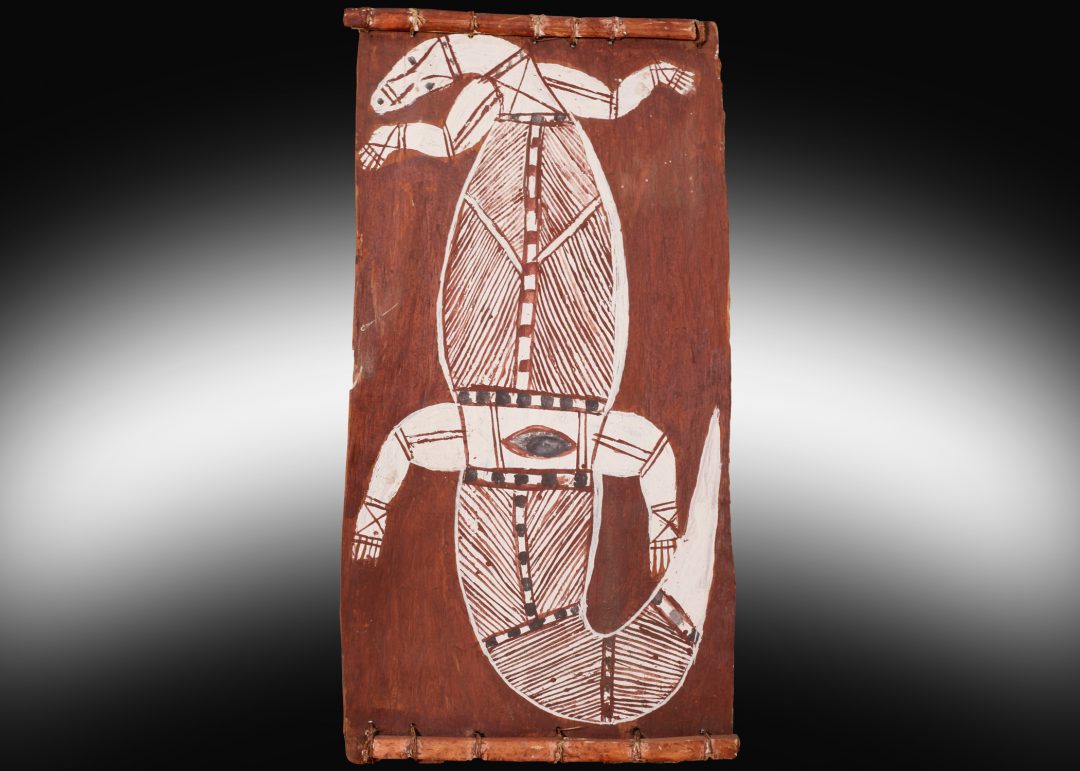Gandagadj : Red Plain Kangaroo
-
TitleGandagadj : Red Plain Kangaroo
-
ArtistUnknown
-
LocationOenpelli, West Arnhem Land, Northern Territory
-
Date1968
- Size78cm (L) x 45cm (W)
-
Price$2,600 AUD
The Gunwinggu language distinguishes between the different species of kangaroo, of which individual names identify both male and female. Originally an ancestor of the kangaroo totem could turn himself into a kangaroo named Gandagadj ( Kandakid ). He painted himself on the walls of the cave he lived in. He then organised a ceremony called the “Ubar”. He sent two kangaroo women to invite everyone except uninitiated, women and children. Before the ceremony started, Gandagadj told the men only the fully initiated would be allowed to see the Ubar drum, or take part in the ceremony. Since then the Ubar Ceremony has always followed the pattern laid down by Gandagadj. He instructed that the kangaroo must be painted many times on rocks surrounding the Ubar ground. Should the Ubar Ceremony be performed where there are no rocks on which the design can be painted to instruct the initiates, then sheets of bark should be used. This custom is how the art of painting on bark originated.
The artist has depicted Gandagadi in the typical West Arnhem Land style, illustrating the internal organs and backbone integrated with the geometric cross hatching.
The Gunwinggu language distinguishes between the different species of kangaroo, of which individual names identify both male and female. Originally an ancestor of the kangaroo totem could turn himself into a kangaroo named Gandagadj ( Kandakid ). He painted himself on the walls of the cave he lived in. He then organised a ceremony called the “Ubar”. He sent two kangaroo women to invite everyone except uninitiated, women and children. Before the ceremony started, Gandagadj told the men only the fully initiated would be allowed to see the Ubar drum, or take part in the ceremony. Since then the Ubar Ceremony has always followed the pattern laid down by Gandagadj. He instructed that the kangaroo must be painted many times on rocks surrounding the Ubar ground. Should the Ubar Ceremony be performed where there are no rocks on which the design can be painted to instruct the initiates, then sheets of bark should be used. This custom is how the art of painting on bark originated.
The artist has depicted Gandagadi in the typical West Arnhem Land style, illustrating the internal organs and backbone integrated with the geometric cross hatching.





